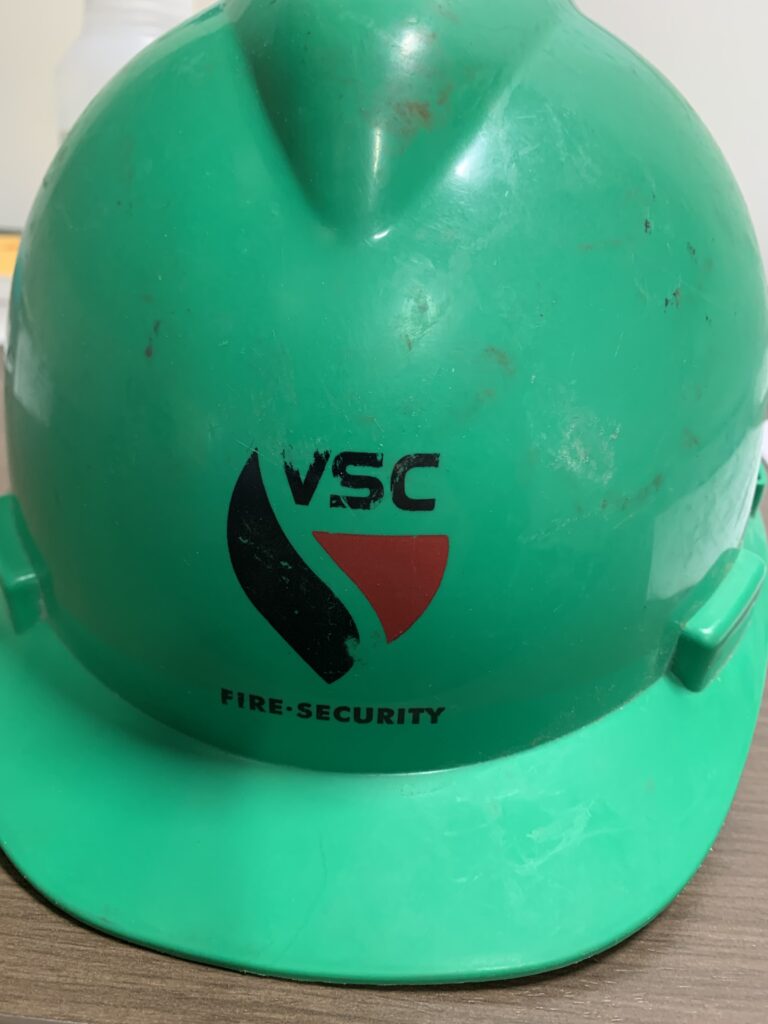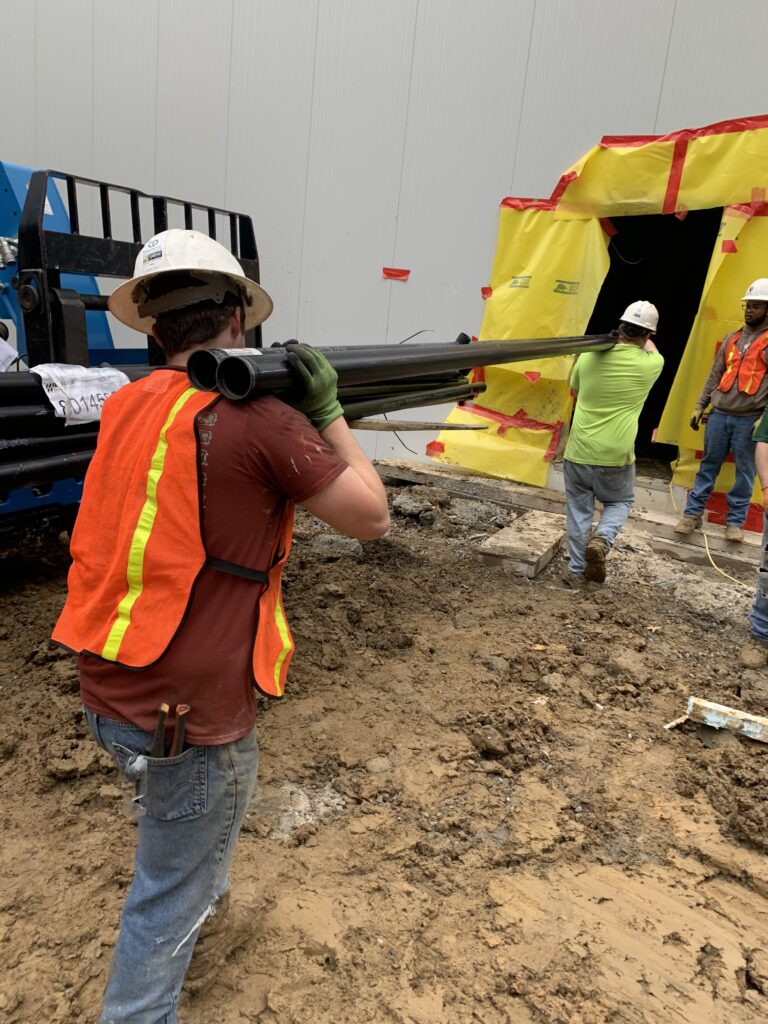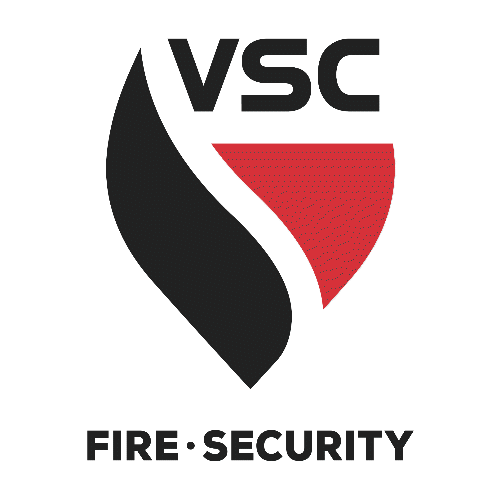WEEK 1

NEW & FIRST DAY ON THE JOB
Whether you’ve been in the business for many years or you’re a new employee, there’s always a ‘First Day on the Job’; a new project for you old timers, which may or may not be different from your last job, and for some of you, a brand new job.
Your safety on any job is important, so let’s discuss the types of personal protective equipment you need to use. Hard hats are designed to protect your head, and statistics prove that they prevent most serious head injuries — WEAR YOURS! Eye protection is required when there is any possibility of an eye injury — safety glasses, mono goggles and cutting goggles will protect your eyes but they must be WORN, not carried in your pocket. Face shields are required when grinding, cutting overhead, and drilling overhead. Other types of protective equipment include hearing protection, respirators, harnesses, lifelines, and proper work clothes. All of these are important to your safety and should be used as required.
Good housekeeping is a must! Make sure you keep your work area picked up and dispose of trash as needed. Keep aisles and walkways clear of obstructions. Always inspect your electrical and hand tools prior to use. If you find anything wrong or damaged, let your supervisor know and tag the tool ‘NEEDS REPAIR – DO NOT USE’. When you are required to use a ladder check it out — inspect it for any damage — make sure it’s the right size for the job — and never stand on the top two rungs or steps. If you’re using a metal ladder keep a sharp eye out for overhead power lines — coming in contact with them can be deadly!
Have a right to know what hazardous materials are in use on the job. Copies of safety data sheets (SDS) are available and should be reviewed if you have any question about the handling or protective gear necessary when using any hazardous material. Always read the label on containers so you know what you’re using.
The bottom line is that your safety is a top priority, whether you’re an old timer or new on the job. Think ‘SAFETY FIRST’, wear protective gear as required, use common sense and good judgement, and check with your supervisor if you have any questions or concerns
EVERY TOOL HAS A PLACE – RETURN IT WHEN YOU’RE THROUGH. IF IT’S DAMAGED, TAG IT AND TAKE IT OUT OF SERVICE.
WEEK 2
WHAT TO DO IF SOMEONE IS INJURED AT WORK
Follow these steps specifically if you or another employee is injured at work:
- If the injured employee requires emergency medical treatment call 911 immediately or get them to the nearest medical facility as soon as possible!
- If the injury is NOT an emergency, discuss with the injured employee how, when and where it occurred and write down all the details.
- Call the Safety/Human Resources Manager immediately on all employee work injuries.
- Notify the injured employee’s immediate supervisor as soon as possible.
- The Safety/Human Resources Manager will provide instructions on what to do next to provide medical treatment for the injured employee.
- Make an accident/incident report is filled out. Forms for report can be found on safety website.
- Drug test should be completed as soon as possible.
Details of the incident are critical so get as much details as possible, pictures are very helpful, AND report all injuries when they occurred.
WEEK 3

LIFTING
Do you realize you may be risking serious injury many times a day and not even know it? WE KNOW YOUR STRONG! DON’T BE SCARED TO ASK FOR HELP! Well, it’s true if you don’t lift correctly or don’t like asking for help. Improper lifting may cause back injuries that can take months and even years to heal. Sometimes they are permanent and disabling. A little know how, however, can enable you to lift correctly.
PREPARING TO LIFT
Give the load the once-over. If it looks too heavy, don’t be afraid to ask for help. Be sure you’re wearing safety shoes. There is always the chance of dropping something on your toes. If the object has rough or sharp edges, wear a good, tough pair of work gloves. They’ll give you a good grip and protect your hands.
MAKING THE LIFT
Crouch down with the load between your legs and get a good grip on the object. As you rise, lift with your legs, keeping your back vertical and the load as close to your body as possible. If you have to place the load to your left or to your right, don’t twist your body. Move your feet instead. When you have to lower a load, simply reverse the knees bent, back vertical procedure.
LET’S REVIEW
Let’s quickly review what we said about lifting:
1. Don’t lift more than you can handle. Ask for help with heavy loads.
2. Wear safety toe shoes at or above the ankle.
3. Wear gloves cut 2 gloves or higher to prevent cuts.
4. Lift with your legs and not your back.
5. Keep the load close to your body.
6. Don’t twist your body when placing a load to one side or the other. Move your feet instead.
When it comes to lifting, don’t break your back. Instead, lift right and give your back a break.
WEEK 4
NEAR MISS
How many times have you shrugged off a near miss? Never gave it a second thought? Next time, think twice. The difference between a near miss and an accident often is a fraction of a second or an inch. And when it happens again, that difference may not be there.
WE NEVER KNOW WHEN THE SERIOUS INJURY IS NEXT
One study shows that for every 330 incidents of the same type, 300 produce no injuries, 29 produce minor injuries and one produces a major injury. (Of course, these statistics vary with the job being done.) The problem is we never know which time the major injury will occur. Near misses are warnings. If we heed these warnings and look for causes, we may be able to prevent injury or damage.
HERE’S AN EXAMPLE
You’re going up a walkway into a building. Your foot slips. Being agile and empty handed, you regain your balance with no harm done. Another person comes along. He slips, but his reactions are a little slower than yours. To keep from falling, he jumps off the board. Again no harm done. Then comes a third person carrying a load. He has the same experience, but falls off the board with the load on top of him. He breaks his ankle. Two warnings were ignored. Finally, someone was hurt. Now the loose cleat, sand, or mud on the board is discovered and the condition corrected. We’ve locked the barn after the horse has been stolen. Two of us saw the thief lurking around, but failed to take action.
WHENEVER YOU SEE A NEAR MISS, ASK “WHY?”
Suppose you’re walking toward a suspended mason’s scaffold. You see a brick fall, but hear no warning shout. Ask yourself: “Why did it fall? Was it kicked loose? Ls a toe board missing?” Then correct this condition if possible. If not, report it to someone who can.
KEEP THE RIGHT ATTITUDE
Never take the attitude that amiss is as good as a mile. The next time, it may be the last mile for you or a fellow worker.
“SAFETY IS PRIORITY NUMBER 1!”
